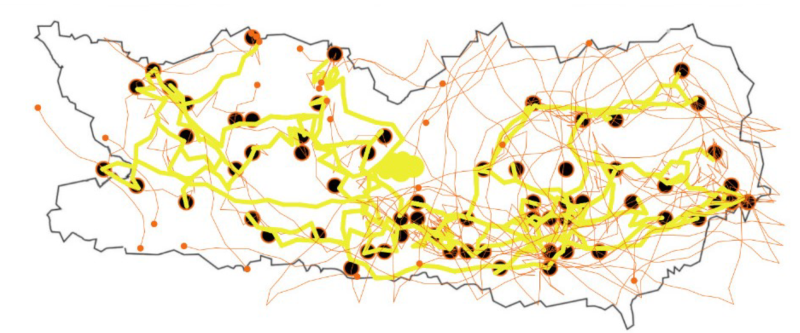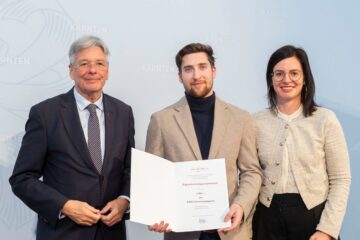After an extensive period of comprehensive research, encompassing literature review, hypothesis formulation, modeling, implementation, and several weeks of simulation, we showcased our paper titled “A Graph-Based Approach for Applying Biologically-Inspired Slime Mold Algorithms for Repairing a Power Transmission Network after an Electromagnetic Pulse Attack” at the 2nd International Conference on Power Systems and Electrical Technology (PSET) in Milan, Italy, taking place from August 25th to 27th, 2023. The paper, authored by Kristina Wogatai, Johannes Winkler, and Wilfried Elmenreich, delved into applying slime mold algorithms to restore power grids following electromagnetic pulse (EMP) attacks.

The proposed method used a simulated slime mold algorithm on graph models to identify critical repair areas, mimicking how slime molds build networks between food sources. Slime molds are single-celled organisms that exhibit intelligent swarm behavior. They have inspired algorithms for solving optimization problems and designing efficient transportation networks, as shown, among other works, by our open-source algorithm SISMO (Simulation of Slime Molds). The SISMO algorithm was customized for connected power stations and plants by feeding it with the positions of relevant power facilities in the Carinthian power transmission network.
I have worked with slime molds in vitro and in silico. They are fascinating creatures.
Applying a biologically-inspired algorithm to such a domain was not straightforward. One challenge was conveying geographic or demographic criteria for the placement of power lines to the algorithm, which initially only had the positions of the power stations. The paper suggests modifying the layout using graph visualization algorithms like Force Atlas, Force Atlas2, and Yifan-Hu to communicate these parameters to the algorithm implicitly. By employing graph visualization algorithms, the network’s performance was significantly enhanced. These results underscore the approach’s effectiveness in improving network reliability, particularly in the face of EMP attacks, and highlight the potential of bio-inspired algorithms for bolstering the resilience of critical infrastructures.
This research not only contributed valuable insights into using bio-inspired self-organizing algorithms in critical areas but also earned Kristina Wogatai the “Best Oral Presentation” award, emphasizing the paper’s quality and the significance of its findings in the context of power network restoration.
For further information, have a look at the paper
Kristina Wogatai, Johannes Winkler, and Wilfried Elmenreich. A Graph-Based Approach for Applying Biologically-Inspired Slime Mold Algorithms for Repairing a Power Transmission Network after an Electromagnetic Pulse Attack. In Proc. 2023 2nd International Conference on Power Systems and Electrical Technology (PSET 2023), Milan, Italy, August 25-27, 2023.




